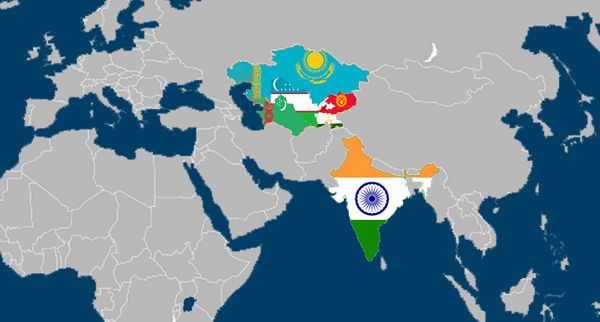- Courses
- GS Full Course 1 Year
- GS Full Course 2 Year
- GS Full Course 3 Year
- GS Full Course Till Selection
- MEP (Mains Enrichment Programme) Data, Facts
- Essay Target – 150+ Marks
- Online Program
- GS Recorded Course
- NCERT- First Ladder
- Polity
- Geography
- Economy
- Ancient, Medieval and Art & Culture AMAC
- Modern India, Post Independence & World History
- Environment
- Governance
- Science & Technology
- International Relations and Internal Security
- Disaster Management
- Ethics
- Current Affairs
- Indian Society and Social Issue
- CSAT
- 5 LAYERED ARJUNA Mentorship
- Public Administration Optional
- ABOUT US
- OUR TOPPERS
- TEST SERIES
- FREE STUDY MATERIAL
- VIDEOS
- CONTACT US
IISc. Develops Nanozyme to Prevent Excess Blood Clotting
IISc. Develops Nanozyme to Prevent Excess Blood Clotting
04-06-2025

- Researchers at the Indian Institute of Science (IISc.) in Bengaluru have developed a new artificial metal-based nanozyme that shows promise in controlling abnormal blood clotting.
- This innovation could potentially be used to treat conditions like pulmonary thromboembolism (PTE) and other diseases where excess clotting occurs.
What is Blood Clotting and the Problem ?
- Normal Clotting (Haemostasis):
- When a blood vessel is injured, specialized blood cells called platelets get activated.
- These platelets gather around the injury to form protective blood clots.
- This process is called the blood clotting cascade (haemostasis) and involves complex protein interactions triggered by chemical signals (agonists) like collagen and thrombin.
- Abnormal Clotting (Thrombosis):
- In certain conditions (like Pulmonary Thromboembolism - PTE) or diseases (like COVID-19), these normal signals go wrong.
- This leads to an increase in oxidative stress and toxic Reactive Oxygen Species (ROS).
- High ROS levels cause over-activation of platelets, which then trigger the formation of excess clots in blood vessels.
- This excess clotting leads to thrombosis, a major cause of illness (morbidity) and death (mortality).
What is The IISc. Nanozyme Solution?
- Researchers: Department of Inorganic and Physical Chemistry at IISc.
- What is a Nanozyme?
- They developed nanomaterials (very tiny materials at the nanoscale) that can copy and do the activity of natural antioxidant enzymes.
- Natural antioxidant enzymes help to scavenge (remove) harmful reactive oxidative molecules (like ROS).
- How it Works:
- These nanozymes work by controlling ROS levels.
- By doing so, they prevent the over-activation of platelets, which in turn stops the formation of excess blood clots (thrombosis).
Key Development and Findings:
- The team created redox-active nanomaterials (materials that can participate in reduction-oxidation reactions, crucial for controlling ROS) of different sizes, shapes, and forms.
- They started with small building blocks and used controlled chemical reactions.
- Testing:
- They isolated platelets from human blood.
- They activated these platelets using natural chemical signals.
- They then tested how well different nanozymes could prevent platelets from clumping together excessively.
- Most Efficient Nanozyme:
- The team found that spherical-shaped vanadium pentoxide (V2O5) nanozymes were the most effective.
- These specific materials mimic a natural antioxidant enzyme called glutathione peroxidase, which helps to reduce oxidative stress.
- Key Role of Vanadium: Unique chemistry of the vanadium metal is crucial because the redox reactions that reduce ROS levels are happening on the surface of the vanadium nanomaterial.
Animal Model Studies and Future Plans
- Mouse Model: The team injected the V2O5 nanozyme into a mouse model of Pulmonary Thromboembolism (PTE).
- Results:
- The nanozyme significantly reduced thrombosis (excess clotting).
- It also increased the survival rates of the animals.
- No toxic effects were observed: The researchers monitored the animals' weight, behavior, and blood parameters for up to five days after injection and found no signs of toxicity.
- Future Research:
- The team now plans to study the nanozyme's effectiveness in preventing ischemic stroke, which is also caused by blood vessel clogging.
- Team expressed optimism for human clinical studies, stating, "We are hopeful about clinical studies in humans because we have done our experiments with human platelets, and they worked."
Significance
This development by IISc. researchers represents a promising new approach to treating and preventing life-threatening conditions caused by abnormal blood clotting, leveraging nanotechnology to mimic natural biological processes.
|
PRELIMS MCQ : Q. The artificial nanozyme developed by IISc to prevent abnormal blood clotting is primarily based on which metal? Answer: (b) Vanadium ENSURE IAS Mains Question (250 words)Q. Explain the significance of nanotechnology in modern healthcare. With reference to the nanozyme developed by IISc, evaluate how nanomaterials can be harnessed to copy natural biological processes for therapeutic benefits. |




